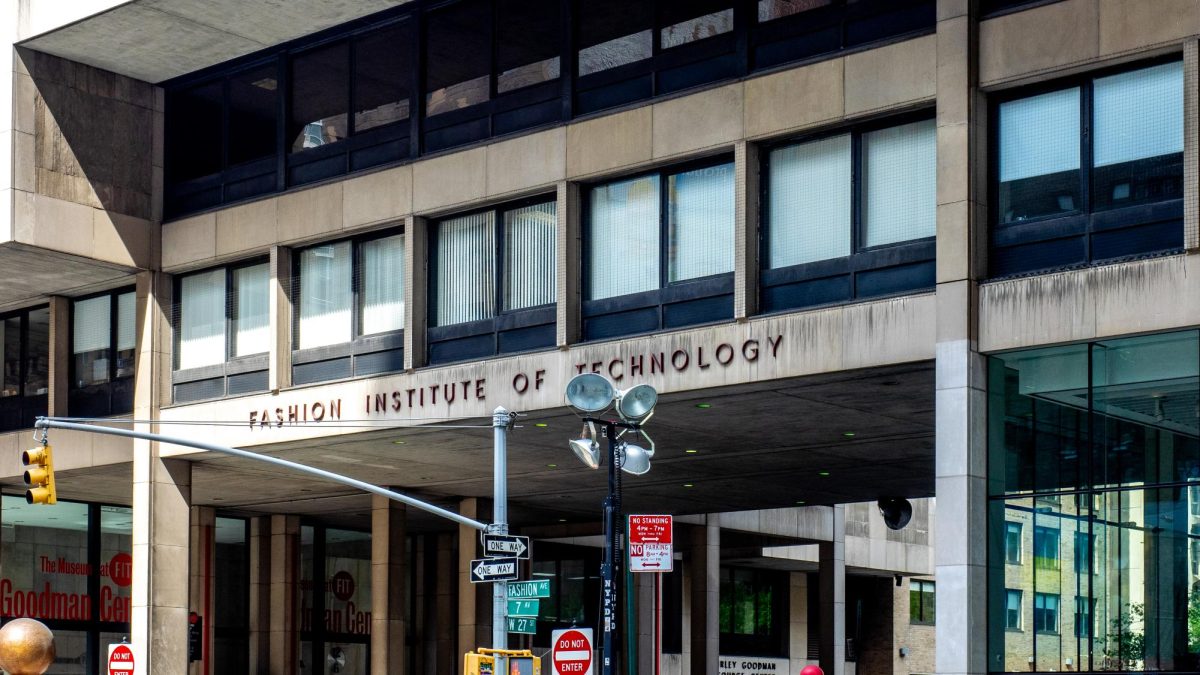What exactly do food and fashion have in common? Luckily enough, the “Food & Fashion” exhibit at the Museum at the Fashion Institute of Technology (FIT) can answer this question free of charge.
“Food & Fashion,” co-curated by Melissa Marra-Alvarez and Elizabeth Way, hosts a vast collection of clothing and accessories that depicts the unique connections between literal and figurative consumption throughout history. Additionally, it explores the ways in which the food people eat influences their lives and attire, as well as examines that relationship through the lenses of gender, race, ethnicity and class.
Boasting garments sourced as far back as the 1700s along with prominent brands, including Balenciaga and Moschino, the collection details the diverse and varied backgrounds present in the relationship between food and fashion.
Beyond the exhibit’s inspection of gender roles and the ways in which food and fashion can reinforce them, it also showcases the work of a diverse group of creators from marginalized racial backgrounds.
The gallery’s setting is a dimly lit room that cleverly opens the discussion on gender and fashion with an insider’s perspective on women’s household wear. With unique pieces like “Cherry-Picked” by Wes Gordon and “Apron-Chic” lent by Golyester Vintage Clothing, viewers can begin to unpack the ways in which food defined the lives of many 1950s American housewives and how it greatly influenced the clothes that were advertised to and worn by them.
Present throughout the collection, the whimsical food imagery ranges from cherries to peanuts, and that, paired with the variety of apron-based designs, captures the zeitgeist of the 1950s and the “ideal” domestic life. This further explores the ways in which a majority of women’s labor in the 1950s revolved around preparing and cooking food.
Marra-Alvarez and Way go on to further unpack the nuances of gender norms, including how the act of dining affects dress — as illustrated by Givenchy cocktail hats — and the hypersexualization and objectification of women’s bodies, particularly women of color. This concept is prevalent throughout the exhibit but is especially visible in pieces like Candy’s Bikini, video presentations of Josephine Baker and Carmen Miranda’s old performances, and in the centerpiece of the exhibit itself: the Moschino Chocolate Bar Dress.
Beyond the exhibit’s inspection of gender roles and the ways in which food and fashion can reinforce them, it also showcases the work of a diverse group of creators from marginalized racial backgrounds. These designs highlighted the importance of ethnic cuisines and how they can both reflect on and create cultural experiences.
Haitian-Italian designer Stella Jean’s yam-print dress was an evident example of these ideas on display, which features characteristics that honor both sides of her heritage. With a European-style collared shirt, Jean acknowledges her Italian ancestry, while simultaneously employing yam imagery to emphasize the significance of a Haitian food staple and allude to the ways in which West African cuisine has been shaped by slavery.
Tremaine Emory, American designer and creative consultant, similarly incorporates images of his own culturally significant food staples, including watermelon, black-eyed peas, collard greens and okra, all essential staples of Jamaica, Queens. He uses these products to raise awareness to issues of food insecurity within his community.
Marra-Alvarez and Way’s work in capturing designs and perspectives from around the world is impressive. It provides a commentary on consumption and sustainability.
The gallery also features famed Japanese designer Issey Miyake, who employs a similar strategy in incorporating cultural cuisine and design. “Sushi Pleats Please,” a piece that consists of practical accessories folded to resemble sushi, celebrates the ways in which Miyake has brought Japanese culture to the forefront of American fashion.
In addition to these examples, the collection also manages to touch upon China’s enduring impacts, represented by the silk jersey pulled from Han Feng’s spring 1998 collection; the piece depicts the luxury that China’s advancements in silk and tea propagated throughout the world and pays homage to the nation’s global influence.
Marra-Alvarez and Way’s work in capturing designs and perspectives from around the world is impressive. It provides a commentary on consumption and sustainability, depicting the different ways where fashion, specifically graphic t-shirts, have been used as a form of protest.
Pieces such as a United Farm Worker shirt and a Panda Express “Eat with Us” shirt, delve into the complicated ethics of food cultivation and distribution. On the other hand, the gallery showcases a range of high fashion brands, each with varying levels of self-awareness on the subject.
This contrast is especially evident between pieces that appear to be brand deals, like the Tommy Hilfiger and Coca-Cola 1980s collaboration, and others like Moschino’s “Over 20 Billion Served,” which attempt to critique overconsumption by commandeering ubiquitous symbols of fast food and reimagining them as high fashion.
Regardless of how much or how little you know about the industry, this exhibit artfully analyzes a plethora of ideas that any viewer can relate to and find interest in. So, whether you’re looking for a unique and diverse set of commentary, a collection on all that is whimsical, wonderful and surreal, or just something free to do in the city, “Food & Fashion” is well worth your time.
The exhibition will be on display until Nov. 26 at FIT’s campus in Chelsea.

